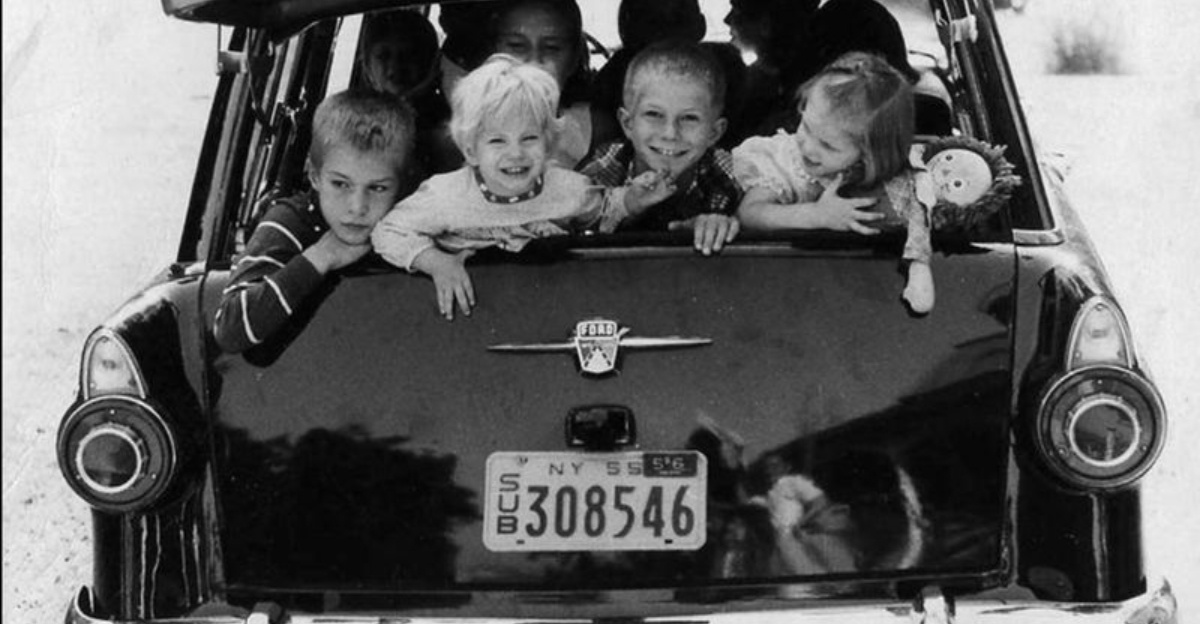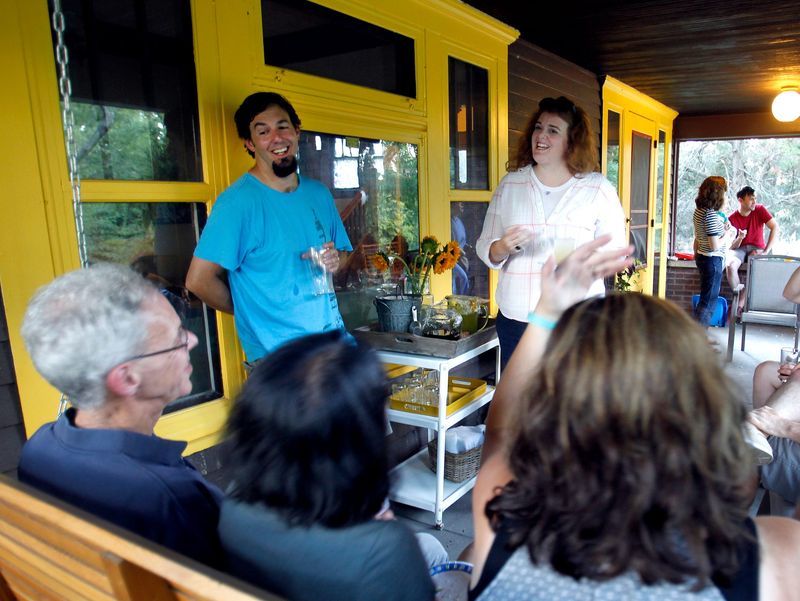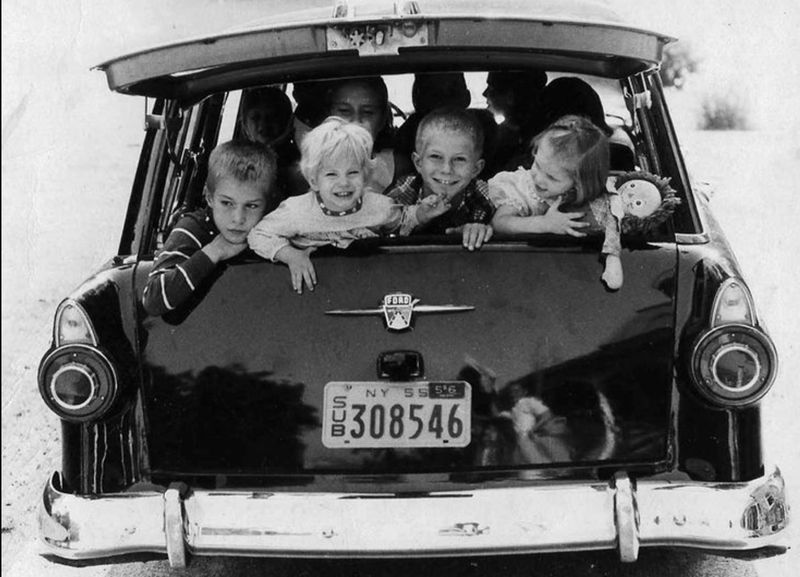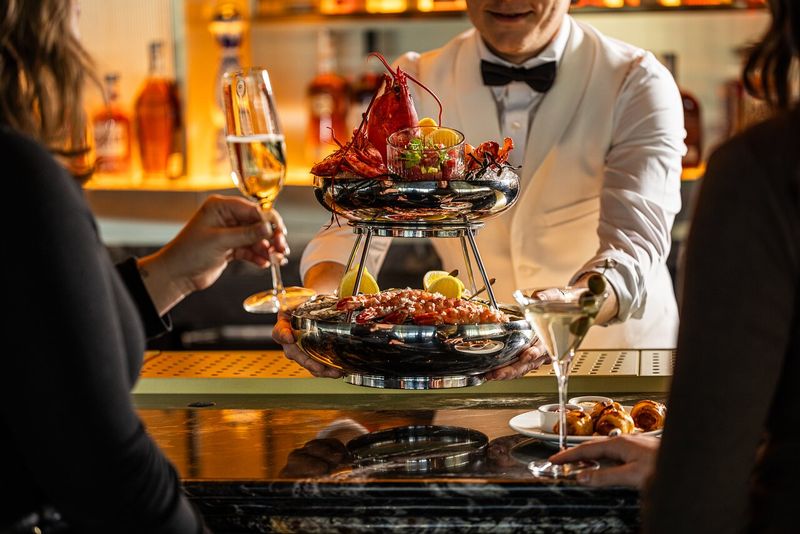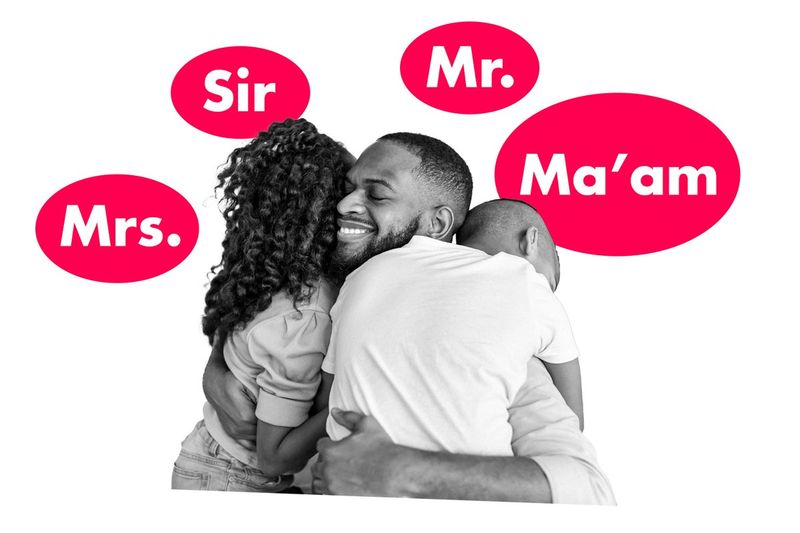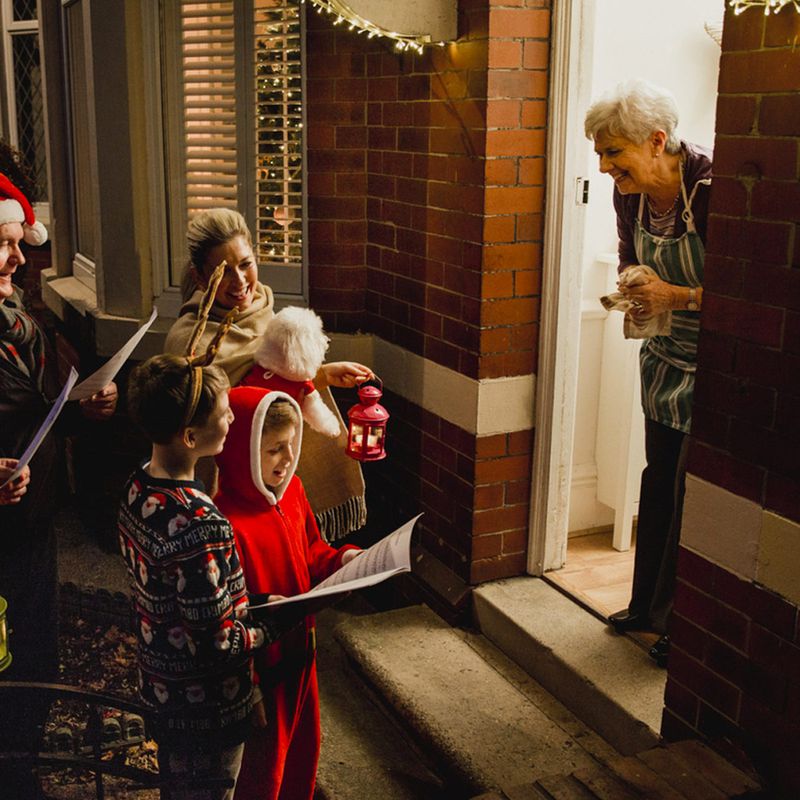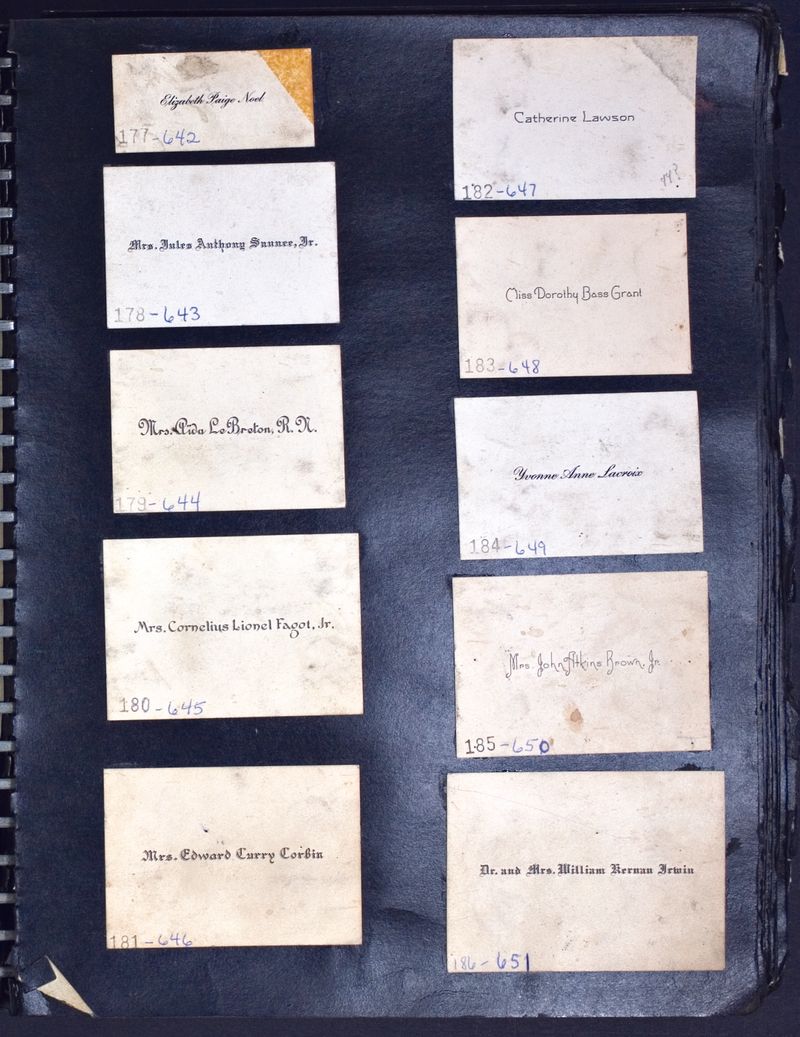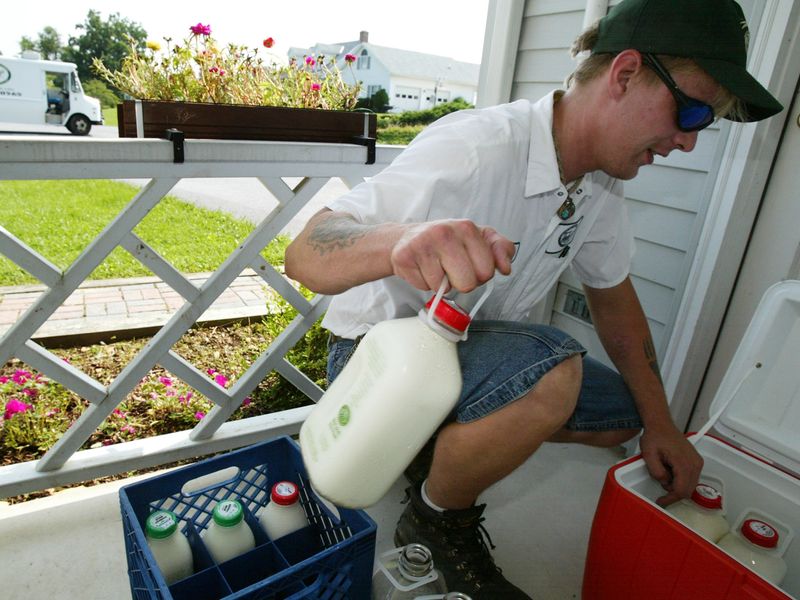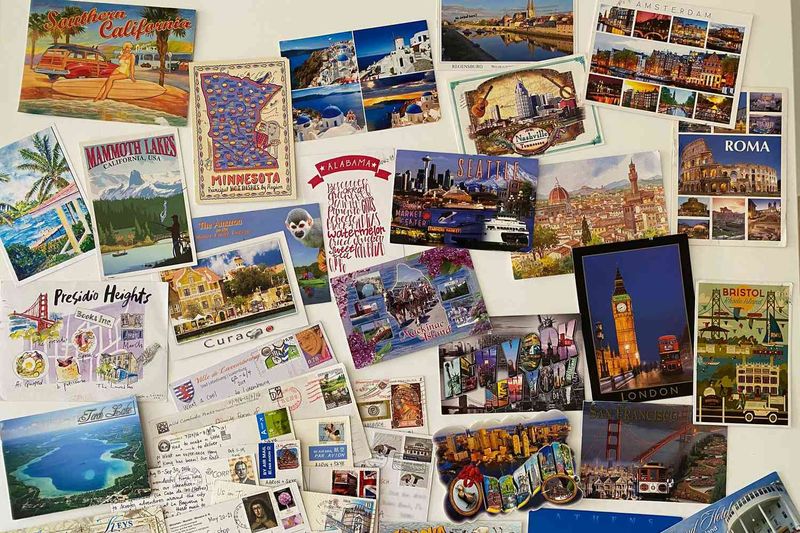Remember when life moved a little slower and connections felt deeper? Our grandparents’ generation had customs that brought people together in meaningful ways. As technology pushes us forward, we’ve left behind traditions that once added richness to everyday life. These forgotten practices weren’t just quaint habits – they were the glue that held communities together and gave our days structure and meaning.
1. Handwritten Letters
The mailbox once held possibility – personal notes bearing news, confessions, and connections. Each envelope carried not just words but personality in the slant of handwriting, choice of stationery, and even occasional coffee stains.
Finding time to sit and compose thoughts on paper showed someone they were worth the effort. People saved these tangible tokens of affection in boxes tied with ribbon, revisiting them years later.
Modern communication offers speed but sacrifices substance. A handwritten letter today stands out precisely because it’s unnecessary – a deliberate act of caring that transcends efficiency for the sake of human connection.
2. Front Porch Sitting
American neighborhoods once hummed with conversation as families gathered on front porches after dinner. Kids played tag in the yard while adults exchanged news and sipped cold drinks from actual glasses – not disposable cups.
These casual gatherings created neighborhood watch systems more effective than any security camera. New families were welcomed, birthdays celebrated, and grieving neighbors comforted – all from the humble front porch.
The architecture of connection has been replaced by backyard decks and basement entertainment centers. Moving life back to the front of our homes might be the simplest way to rebuild community one conversation at a time.
3. Home-Cooked Meal Delivery
When babies arrived or loved ones passed, neighbors once appeared bearing casseroles in glass dishes labeled with masking tape. These meals weren’t just food – they were edible support systems during life’s most overwhelming moments.
The casserole brigade operated without spreadsheets or apps. Someone simply called someone else, who called someone else, until a family had weeks of dinners arranged.
Food delivery services can’t replicate the care embedded in a homemade lasagna or apple pie. Reviving this tradition means acknowledging that sometimes people need nourishment that DoorDash simply cannot provide – meals made with equal parts ingredients and compassion.
4. Sunday Drives Without GPS
Back when gas was cheap and Sundays were sacred, families piled into cars with no particular destination. The thrill came from turning down unfamiliar roads and discovering hidden gems in your own backyard.
Children fought over window seats while parents pointed out landmarks and told stories. These aimless adventures created shared memories and taught us that sometimes the journey matters more than the destination.
Today’s over-scheduled lives leave little room for such spontaneity. Bringing back the GPS-free Sunday drive might be just the digital detox we need – a few hours of unplanned wandering to reconnect with each other and our surroundings.
5. Proper Handshake Introductions
First impressions once hinged on a simple yet profound ritual – the handshake. A proper introduction involved standing up, making eye contact, and offering a firm (not crushing) grip that conveyed respect and attention.
Children were taught this art by parents who understood its importance. Names were clearly spoken and often repeated back, signaling that you valued the new connection enough to commit it to memory.
Post-pandemic awkwardness has left many fumbling between elbow bumps and hesitant waves. Reclaiming the intentional handshake doesn’t just formalize meetings – it establishes a foundation of mutual acknowledgment that digital introductions can never match.
6. Dressing Up for Special Occasions
Airplane travel once inspired passengers to wear their finest clothes. Theaters were seas of sport coats and dresses rather than hoodies and flip-flops. The effort signaled that the experience itself deserved respect.
Getting dressed up transformed ordinary outings into events. Children learned that certain places warranted special behavior, and adults felt the psychological boost that comes with looking your best.
Our comfort-obsessed culture has blurred all distinctions between settings. Perhaps reclaiming the tradition of occasionally dressing up isn’t about snobbery but about marking important moments as different from everyday life – worth the extra effort and attention they deserve.
7. Community Potluck Suppers
Church basements and community halls once filled regularly with tables of mismatched dishes brought by neighbors. Each casserole dish and pie plate told a story – grandmother’s recipe, cultural heritage, or simply what was on sale that week.
These gatherings crossed socioeconomic lines effortlessly. The banker sat beside the janitor, both complimenting each other’s cooking while children played underfoot.
Food allergies and busy schedules make potlucks seem complicated today. Yet no restaurant experience can replace the sense of belonging created when a community literally brings their best to the table and shares not just meals but lives across generations.
8. Saying “Ma’am” and “Sir”
Southern grandmothers had it right all along. Those simple honorifics – “yes ma’am” and “thank you, sir” – weren’t about formality but about acknowledging another person’s dignity regardless of their station in life.
Children who used these terms weren’t being submissive but practicing the art of respect. The habit created a framework for civility that extended beyond words to actions.
Regional variations aside, the underlying principle remains valuable. Addressing others with verbal markers of respect costs nothing yet pays dividends in smoother interactions. Perhaps this small linguistic tradition deserves reconsideration not as outdated formality but as timeless social glue.
9. Holiday Caroling
Imagine opening your door on a December evening to find neighbors bundled against the cold, singing “Silent Night” with visible breath in the frosty air. This once-common tradition brought music directly to doorsteps before streaming services and wireless speakers.
Caroling groups included both talented singers and those who couldn’t carry a tune. The point wasn’t perfection but participation – creating moments of surprise joy for homebound neighbors or new families.
Few traditions so effectively bridge generational and cultural divides. Even those who don’t celebrate Christmas can appreciate the goodwill behind neighbors braving cold weather to deliver live music – a gift that requires no wrapping but creates lasting community bonds.
10. Family Recipe Preservation
Before recipe websites and cooking shows, knowledge passed from kitchen to kitchen through demonstration and practice. Grandmothers taught grandchildren the perfect pie crust with hands guiding hands – no measuring cups required.
These culinary heirlooms carried family history. The special meatballs served at every birthday contained stories of immigration and adaptation alongside the secret ingredient (often breadcrumbs soaked in milk).
Modern convenience has streamlined cooking but diminished transmission of these edible histories. Reviving the tradition of documenting and teaching family recipes creates tangible connections to ancestry. More importantly, it preserves techniques that algorithms can suggest but never fully capture – like exactly how long to knead dough “until it feels right.”
11. Formal Calling Cards
Long before social media profiles, people announced themselves with elegant simplicity – a small card bearing their name. Victorians elevated this practice to an art form, using these cards to request visits or express gratitude.
The calling card system created clear social boundaries. Leaving your card meant “I’d like to see you” without the presumption of an immediate response – giving the recipient control over when and whether to engage.
Modern communication suffers from its immediacy and casual nature. Perhaps a modified version of calling cards – personalized notes left at doorsteps or even elegant business cards with personal contact information – could restore thoughtfulness to our interactions while respecting others’ time and boundaries.
12. After-Dinner Family Walks
European cultures have long understood something Americans forgot – the evening constitutional isn’t just about digestion but connection. Families once routinely walked together after the evening meal, discussing the day while moving at a pace that invited conversation.
Children shared school stories they’d forgotten at the dinner table. Parents pointed out seasonal changes in familiar landscapes. No one checked phones because there weren’t any.
The habit combined physical activity with family bonding in a natural rhythm. Reclaiming this simple tradition costs nothing yet offers remarkable returns – improved digestion, better sleep, and conversations that flow more easily side-by-side than face-to-face across technology-cluttered tables.
13. Milkmen and Home Deliveries
Before subscription boxes, there were relationships. The milkman knew which families preferred whole milk and which needed extra eggs on weekends. Glass bottles clinked on porches before dawn, returning empty for refilling – the original circular economy.
These regular deliveries created natural check-ins for elderly neighbors. If bottles remained untouched, the milkman might knock to ensure everything was alright.
Today’s renewed interest in local food makes this tradition ripe for revival. Modern milkmen (and women) deliver farm-fresh products in reusable containers across America, reducing packaging waste while supporting local agriculture. The convenience remains, but with added benefits of community connection and environmental responsibility.
14. Sending Postcards While Traveling
Travelers once dedicated vacation time to selecting and sending postcards from their adventures. Each card required thought – choosing the right image, composing a brief message, finding stamps and mailboxes in unfamiliar places.
Recipients displayed these miniature artworks on refrigerators or collected them in albums. The cards arrived days or weeks after being sent, extending the pleasure of the trip for both sender and receiver.
Social media has replaced this practice with instant updates that disappear into digital noise. Reviving the postcard tradition creates tangible souvenirs that survive both power outages and platform changes. The delayed gratification teaches patience while the physical object provides lasting evidence that someone thought of you while experiencing something beautiful.
15. Intentional Dating and Courtship
Romance once followed recognizable stages rather than existing in undefined gray areas. Couples “went steady” before getting engaged, and dating involved actual activities – picnics, dances, or meeting families – rather than just “hanging out.”
This structure wasn’t about restriction but clarity. Everyone understood where relationships stood because people used words and actions that signaled intentions.
Modern dating apps and casual hookup culture have created freedom but also confusion and anxiety. Bringing back elements of traditional courtship doesn’t mean returning to chaperones. It means embracing clear communication about expectations, planning meaningful experiences together, and acknowledging that building relationships worthy of commitment requires both time and deliberate effort.
16. Silent Sundays
Some communities once observed “quiet Sundays” where businesses closed and unnecessary work ceased. This wasn’t just religious observance but communal agreement that everyone deserved regular rest.
Families played board games or read books aloud. Neighbors visited on front porches speaking in lower voices than usual. The collective pause created rhythm in community life – a shared exhale before the week began again.
Our 24/7 culture has eliminated natural stopping points. Reclaiming even partial Silent Sundays – perhaps no shopping or lawn mowing until afternoon – could restore both personal rejuvenation and community solidarity. The practice acknowledges a radical idea: sometimes the most productive thing we can do is nothing at all.
17. Dinner Table Conversation
Families once gathered nightly around tables with a radical concept – no screens allowed. Children learned the art of conversation by observing adults discuss current events, share work stories, and debate ideas with respect and humor.
The dinner table served as an informal classroom for developing social skills. Taking turns speaking, reading facial expressions, and navigating disagreements politely became second nature through daily practice.
Studies show that regular family meals correlate with better academic performance and reduced risk behaviors in adolescents. Beyond these benefits, reviving substantive dinnertime conversation creates a daily opportunity to truly see each other – to listen not just to words but to the hopes, fears and discoveries that make us human.
